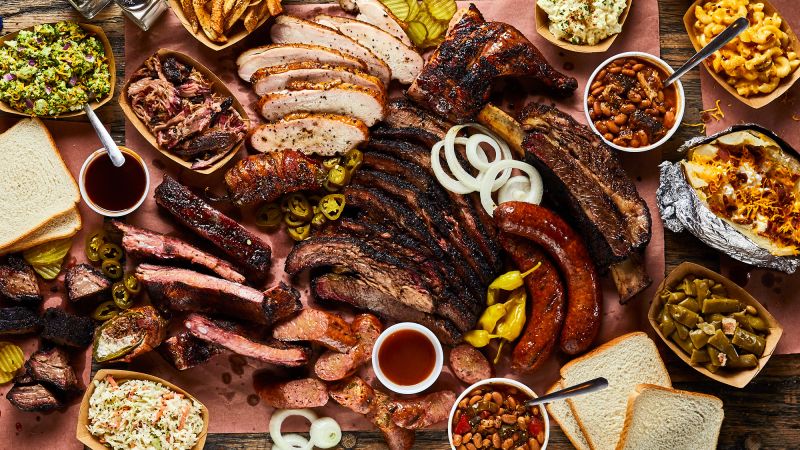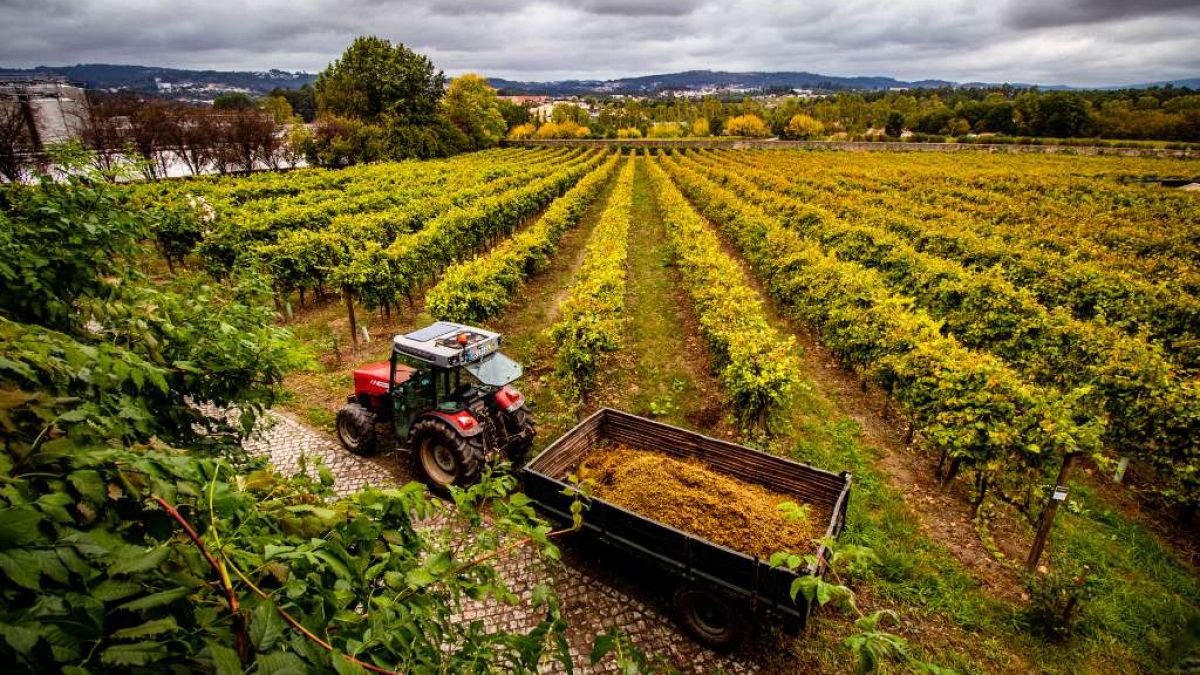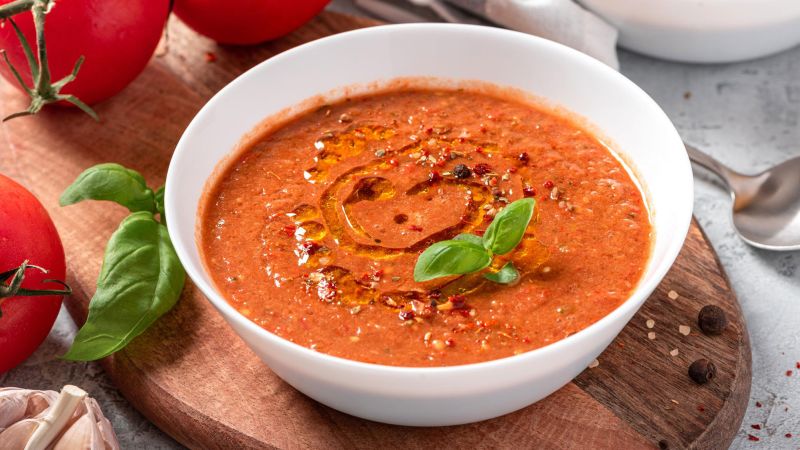Editor’s Note: Americans have come up with a lot of incredible foods. Does this list satisfy your appetite? Or have we frankly left out one of your favorites? Let us know in the comments below.
America is called a melting pot – and that’s certainly true of its food.
The USA’s culinary history is that of reinvention. Waves of food influences – Native, African, British, continental European, Asian and Latin – have landed on our shores (and still do).
People take those classics, mix ’n’ match ’em and then slowly (or quickly) turn them into definitive American dishes. And then we oftentimes send the reformulated food back out into the wider world to complete the cycle.
From starters to desserts, here are Travel’s 20 selections for the greatest American food dishes:
People enjoy barbecue around the world, but Americans have taken a collective passion for low ’n’ slow cooked meat to the next level. Spanish conquistadors brought the cooking style practiced by indigenous Caribbean tribes north. It’s arguably one of the most-argued about foods in the United States – and we’re well-aware of the grand pizza rivalry.
Four classic, regional BBQ rivalries and styles reign: Carolinas (where they’ve gone whole hog for pork); Texas (where beef is king); Memphis (where it’s all about ribs and rubs); and Kansas City (where a sweet, tomato-based sauce is a must). But that’s just the beginning. Regional types have their own subsets of disputes.
For instance, head to the South and you’ll discover a South Carolina / North Carolina split on sauces. Then in just North Carolina, there’s the epic division of Eastern (whole hog, vinegar sauce) and Western (pork shoulder, tomato-and-vinegar sauce). In parts of South Carolina, a mustard-based sauce from German immigrants is preferred, and in even more select spots, a relatively secret “barbecue hash” is beloved. Meanwhile, “Texas big city barbecue” is sweeping the whole nation.
Fried okra is a delicious combination of two long-standing American culinary traditions.
The first is how Americans came to embrace various foods and cuisines from Africa that were brought over during the era of the brutal transatlantic slave trade. Okra, which thrives in heat and humidity, became a regular feature in the South on tables of all races and classes.
Then comes in a second tradition: the American love of deep-frying. (We are the nation of the deep-fried Twinkie, after all.)
Okra can be found swimming in gumbos, succotashes and such. Hard-core fans might enjoy the slimy green pods simply steamed or boiled. They’re even pickled. But breaded and fried is often the entry point for reluctant first-timers, who can be quickly won over with the crunch and distinctive “grassy” flavor.
It’s still wildly popular in the South. Irmo, a small town in South Carolina, holds a yearly Okra Strut to celebrate the fuzzy-skinned, cylindrical veggie. Fried okra makes a great snack, a proper side dish or one part of another concoction such as the Fried Shrimp and Okra Po’boy a la the Williamsburg Inn in Virginia.

California’s trendy tendencies go back for decades. After all, this is the state that introduced the pleasing Cobb salad to the rest of the United States.
Credit for the Cobb salad generally goes to Bob Cobb, owner of the now-defunct Brown Derby chain in Los Angeles. Back in 1937, he whipped up and then chopped up a late-night salad at the North Vine location for Sid Grauman of Grauman’s Theater with what he had on hand.
Grauman loved it. Then LA loved it. Then America followed suit. And why not?
The combination of crispy bacon, blue cheese, cold chicken breast, avocado, hard-boiled eggs, tomatoes and lettuce is hard to resist. Of course, Americans love to tinker, and salads can withstand a lot of messin’ around. So there are all kinds of variations, such as a tropical Cobb with spiced chicken and mangoes.
Peanut butter and jelly sandwich

A satisfying and often humble economic mainstay of the masses, the peanut butter and jelly sandwich was once a decidedly fancy treat for elites in the early 20th century.
According to the National Peanut Board, peanut butter was first introduced at the 1893 World’s Columbian Exposition in Chicago and became popular in upscale tea rooms. Peanut butter and watercress, anyone?
The first known PB&J sandwich recipe was published in 1901 in the Boston Cooking School Magazine of Culinary Science and used currant or crab-apple jelly. Eventually, mass production techniques in the early 1900s and the introduction of the sandwich as a ration for US military personnel in World War II helped spread the appeal. Parents did the rest, packing the easy-to-assemble, irresistible combo into their kids’ lunch boxes – or sneaking it into their own brown bags.
The sandwich continues to have a dedicated and sometimes upper-crust following.

Flour, salt, baking powder and maybe sugar combined and cooked in lard or oil. What could be more simple? Or more complicated?
This Native American fare was born of brutal necessity in the mid-1800s when tribes were forced off their lands and relocated to what’s now New Mexico on “The Long Walk.” With their native fresh foods unavailable, they made do with government-provided processed staples to keep from starving to death.
Since then, fry bread has become a ubiquitous staple passed down through generations and sometimes sold to tourists visiting native lands. It’s quite delicious but not particularly nutritious. It’s a symbol of repression and resilience.
As Kevin Noble Maillard puts it in 2019’s “Fry Bread: A Native American Family Story”: Fry bread is us. It is a celebration of old and new, traditional and modern, similarity and difference.
Red beans and rice

Talk about a successful food partnership.
Rice has been a vital US crop going back to colonial America, namely in the Carolinas and Georgia where tidal flows and weather made for ideal growing conditions. It was grueling work, conducted by slaves. In the 1800s, Louisiana joined the rice-growing game as mechanization allowed for profitable production there.
Meanwhile, red beans were a staple in Haiti. After its revolution against France, refugees fleeing to New Orleans brought the red bean tradition with them. The two foods made for a natural pairing and became an integral part of the New Orleans and Louisiana culinary identity.
Traditionally enjoyed on Mondays (but hardly limited to that day), red beans and rice is often made with cayenne pepper, smoked andouille sausage along with onions, celery and bell pepper.
The allure isn’t just in the rich, smoky, belly-filling taste. The dish is easy on the budget, and red beans are part of the nutritionally powerful legume family.

With the possible exception of apple pie, nothing says “American food” quite like a hamburger.
Its super-compressed origin story could be fancifully called “From the Golden Horde to the Golden Arches.” Burger expert George Motz traces the modern burger’s ancestry back to 13th-century Mongolia. The raw mutton concoction from the remnants of the Mongol Empire eventually made its way over centuries to Hamburg, Germany, and shifted in make-up to cooked chopped beef. German immigrants brought it over to the United States, where it eventually made its way onto a bun.
The Founding Fathers weren’t scarfing burgers down on the regular while crafting breakaway documents in Philly in the late 1700s, but by the start of the 20th century, hamburgers were quickly ascending as a dominant food in the United States. And in post-World War II America, hamburgers were the foundation of a vast Fast Food Empire.
There’s no misunderstanding the hamburger’s juicy, versatile appeal. It’s the perfect food for meat-loving, on-the-go, super-size-me, bargain-hunting, cheese-eating, condiment-craving, make-it-my-way Americans.

The fruit itself originally hailed from Asia. The centuries-old penchant for pie came over with colonists from England. But somehow the United States did it again – turning imports into a thoroughly American-identified product.
In the case of apple pie, it hit peak patriotism during World War II as the US soldier fought “for mom and apple pie.” It’s now American down to the core.
Geography and climate also helped it claim fruit pie ascendancy. Good-sized chunks of the US mainland – all with four distinct seasons and sloping terrain – proved ideal for growing apples. The top 10 states for apple production cover a lot of territory: Washington, New York, Michigan, Pennsylvania, California, Virginia, North Carolina, Oregon, Ohio and Idaho.
Attesting to its enduring popularity: Food & Wine published 22 of its most popular pie recipes in 2022. Three of them were apple pie varieties. As a bonus, warm apple pie pairs well with another American obsession: Ice cream.

The last state to join the union launched one of America’s more recent food trends: the poke bowl. The dish – which today usually consists of cubes of raw ahi tuna or sometimes other cuts of raw seafood such as shrimp or octopus – goes back centuries in Hawai’i, well before contact with Westerners.
Chef Sam Choy, one of the early drivers of the Hawai’i regional cuisine movement in the 1990s, helped expand its popularity well beyond the island chain’s shores.
Like many vaunted American dishes, poke (pronounced poh-kay) is an amalgamation of multiple influences. Japanese and Chinese immigrants added the use of shoyu (a type of soy sauce) and sesame oil.
Variations of poke abound. It can be served atop rice, seaweed or in a salad of greens. You might even find it in tacos for a Hawaiian-Latin fusion.

As with so many foods, the further back you go on ancestry of the modern bowl of chili, the murkier things get. But at least within the United States, the loose consensus is chili was popularized in Texas first. In the 1880s, San Antonio’s downtown was known for its Hispanic outdoor vendors called “chili queens.” At the 1893 World’s Columbian Exposition in Chicago, Texas-style chili was a hit. It spread and morphed from there.
Today, many questions still surround chili: Beans or no beans? Beef or turkey? Red chili peppers or green? Oyster crackers or cornbread? Super Bowl or any ol’ day?
Many Texans might throw a fit if a bean gets anywhere near their chili. Red-meat purists are unlikely to gobble up the turkey variety. New Mexicans would probably give green peppers the go-ahead. Southerners will likely insist on a side of cornbread.
As for a chili-and-Super Bowl combo, we’ll toss that one to Jason Kelce, who lost his Super Bowl ring in a pool filled with Cincinnati-style Skyline chili.

Some say potato. Some say tomato. Some same chow-dah. Some say chow-der. But we’re all talkin’ ’bout clams here, whether it’s the New England variety or the Manhattan variety.
The Encyclopedia Britannica says the word “chowder” derives from the French chaudière, or “cauldron,” and that it might have originated among Bretons who brought the custom to Newfoundland, where it eventually spread to New England and then beyond.
Clam chowder perfectly illustrates how Americans can be adaptive and divisive at the same time. Certainly, the two clam chowder camps can be very loyal to their type. New England fans swear by their rich, milk- or-creamed-based formula with potatoes, onions, salt pork or bacon along with those divine clams. Manhattan mavens prefer their soupier, tomato-based bowl that might feature onion, garlic, celery and carrots along with potatoes.
Down in the Florida Keys, these debates and preferences are just background noise as they devour bowls of conch chowder. (Conch, a type of sea snail, was a staple of the early settlers).

Americans have a special knack for modifying a dish so thoroughly that people in the point of inspiration might not even recognize it. Case in point: General Tso’s chicken.
It’s named after a 19th-century general from Hunan province in southeast China, but it was invented by chef Peng Chang-kuei in Taiwan in the 1950s. (He fled to the island with the Nationalist government after the Communist takeover of the mainland in the late 1940s.) The dish first became popular in Taiwan and reflected mainland Hunan tastes – salty, hot and sour. No sugar or sweetness was added.
Eventually, New York City chefs visiting Taiwan in the early 1970s got hip to the dish. But their version – delicious, lightly battered chunks of dark chicken fried in a sweet-and-sour sauce – appealed to that American penchant for anything fried and sweet.
So like egg foo yung, this beloved “Chinese” favorite has taken on a life of its own in the USA.
Reuben sandwich

Corned beef, the key ingredient of a classic Reuben, was developed hundreds of years ago in the British Isles. That “prototype” of the salted meat we know today was often produced in Ireland but sent to England for consumption because the Irish of that time were too poor to afford it themselves. The modern corned beef we enjoy comes from the Irish diaspora in America, who turned to Jewish butchers and their kosher brisket cut as a food source.
As for origin story of the sandwich itself, there are competing creator stories. Nebraska and New York City both lay claim to the Reuben (this is one food fight the South and West Coast have managed to avoid).
What we know for sure: As the 20th century rolled on, the deli sandwich became more and more of an American darling. And it’s still quite popular in the Cornhusker State and the Big Apple to this day.
What’s not to love? The classic Reuben layers sliced corned beef, Swiss cheese, sauerkraut and Russian or Thousand Island-style dressing on rye bread. Messy and magnificent.
You can also find protein variations across the land: Smoked salmon, turkey and a “Texas Reuben” that has smoked pastrami brisket.

This creamy dish has its roots in the culinary culture of Native Americans, who pounded dried corn to make a coarse cornmeal. They’d then cook it down into a soup or porridge. Like tomatoes, corn was completely new to European colonizers, who quickly took to the concoction.
It’s most popular in the “Grits Belt” stretching roughly from parts of Texas to the Washington, DC, area, and they’re often eaten as a side at breakfast. But grits can be more than simple, cheap, filling morning fare, as evidenced by the rise of shrimp-and-grits, a popular lunch and dinner option in the fanciest of Charleston, South Carolina, restaurants and beyond.
Grits often are an acquired taste – puzzling to newcomers who might find them a bowl of blandness. The key: Avoid quick-cook varieties and go for stone-ground grits cooked low and slow. Add butter, salt and pepper to taste. Then cut your imagination loose. Grits can host cheese, runny fried eggs, bacon pieces, finely chopped tomatoes, sauteed onions, okra and even venison.

Warm-from-the-oven chocolate chip cookies and a cold glass of milk – heaven. Americans have an inventive Massachusetts inn owner back in the late 1930s to thank for this yummy treat.
The story goes that Ruth Wakefield, who ran the Toll House Inn in Whitman, added chopped-up bits from a Nestle semi-sweet chocolate bar to a batch of Butter Drop Do cookies. Things didn’t turn out as she had planned. She thought the chips would melt entirely. But what she got – soft, gooey, distinctive bits – was delicious.
Wakefield sold her recipe rights and the Toll House name to the Nestle company in 1939. Soon enough, they were an American classic. You can get the original recipe here.
Besides being delicious, it’s no wonder they became so popular. Americans love a bargain, simplicity and food they can eat on the go. And in those regards, the relatively inexpensive, easy-to-make, imminently portable chocolate chip cookie scores a tasty trifecta.

It’s hard to overstate Louisiana’s contribution to the American food scene, and it’s equally hard to overstate gumbo’s role in the state’s culinary heritage.
The roots of the dish – found in the humblest of eateries to the finest restaurants – are from West Africa with invaluable contributions from Native American and French cuisines. The hearty stew is traditionally served with rice. As for what’s in it, that can vary from town to town and cook to cook.
Li’l Dizzy’s Café in the Treme neighborhood of New Orleans makes a huge pot of gumbo for lunch every day. That allows for about 60 to 70 servings and takes about two hours to prepare. Their Creole filé gumbo starts with a roux (a flour and fat mixture for thickness). Then shrimp, crabs, ham, smoked sausage, homemade hot sausage are added along with onion, bell peppers and a little celery.
What would happen if Li’l Dizzy’s pulled it off the menu? “Oh, I don’t know if I’d survive it,” owner Wayne Baquet Jr. told Travel. “It may be the most popular item we have on our menu. It’s part of our identity.”

Rice-A-Roni, a traditional parting gift on classic TV game shows, became famous as “the San Francisco treat.” But the city has rewarded a hungry nation with another food where rice is just one part of the package: the Mission burrito.
This stomach-filling, soul-satisfying burrito is named after the Mission District, the Latino neighborhood that got the trend started (locally at first) in the 1960s. It’s a much heftier, jampacked take on the slim, flour-tortilla wrapped burritos born in northern Mexico.
A classic Mission burrito typically features a large, steamed flour tortilla; a meat option; black or pinto beans; a choice of condiments such as pico de gallo, guacamole, sour cream and various salsas – and the rice (long-grain, Mexican-style). It’s rolled up tight and wrapped in foil. Provide your own antacid.
How important is the Mission burrito to the city’s food legacy? In 2003, humorist and food writer Calvin Trillin wrote: “In San Francisco the burrito has been refined and embellished in much the same way that the pizza has been refined and embellished in Chicago.”

By the way that Americans, most particularly those in the South, have taken to banana pudding, you’d think the fruit was grown here in abundance (such as the case with apples). However, the US mainland is just not banana-growing territory.
But since the late 1800s when tropical trade routes opened up, the imported, easy-to-peel fruit has been a star player on the dessert scene.
Like with so many other US faves, variations abound. But a traditional creamy trifle will feature layers of bananas, a vanilla pudding or custard, Nilla wafers (daring heretics might use sponge cake) and then whipped cream or even a meringue. Crushed nuts might go on top.
Banana pudding is a utility player for pretty much any occasion, equally at home at wedding receptions or post-funeral gatherings; church potlucks or backyard beer bashes; fancy restaurants or basic barbecue huts.
Also helping banana pudding’s popularity: It’s simple to make, can feed an army and the next-day leftovers usually taste better than the first batch.
Spaghetti and meatballs

Ever dreamed of going to Italy and enjoying some authentic meatballs and spaghetti after a long day on the canals of Venice or in the museums of Florence? Well, keep dreaming unless you go to a restaurant catering to US tourists. For this is a dish whose domain is New World Atlantic, not Old World Mediterranean.
We do have Italian immigrants to America – the vast majority from southern Italy in the late 1800s to early 1900s – to thank for the comforting combo of meatballs and tomato sauce over pasta.
These people left an impoverished land where tomato sauce was a cooking staple, but meat was a rare luxury. Back in Italy, meatballs were often served sauceless. They were smaller, might be composed of 50% stale bread and made from beef, lamb, turkey or even fish.
In America, they had more money and cheaper meat. They developed their own style of meatballs, making them larger than those in the home country and with more meat and less bread. To bulk up their meals even more, they added a heaping helping of pasta and a tomato sauce.
It’s getting harder to find that old-school, red-sauce Italian restaurants serving the dish these days, but when you do, you’re in for a nostalgic treat.

An English muffin. Canadian bacon. Does this sound like a beloved American classic?
Well, that’s what the internationally sourced creation becomes when you add the poached egg and drizzle it all with Hollandaise sauce (a creamy mixture of egg yolks, butter and lemon juice or vinegar).
Various origin stories from the late 1800s abound. The most reported ones all involve a well-to-do man with the last name of Benedict and the special request made by said man of chefs in New York City restaurants. But which exact Benedict and the particulars of when and where the order was made remain disputed to this day.
Eggs Benedict been a staple at brunches across the country for decades. They were even the favorite touring food of rocker Eddie Van Halen.
The breakfast favorite is subject to all types of divine departures – sliced ham or bacon strips might replace the Canadian bacon. Corned beef or smoked salmon are also used. Substitute spinach for the meat, and you’ve got Eggs Florentine.
















